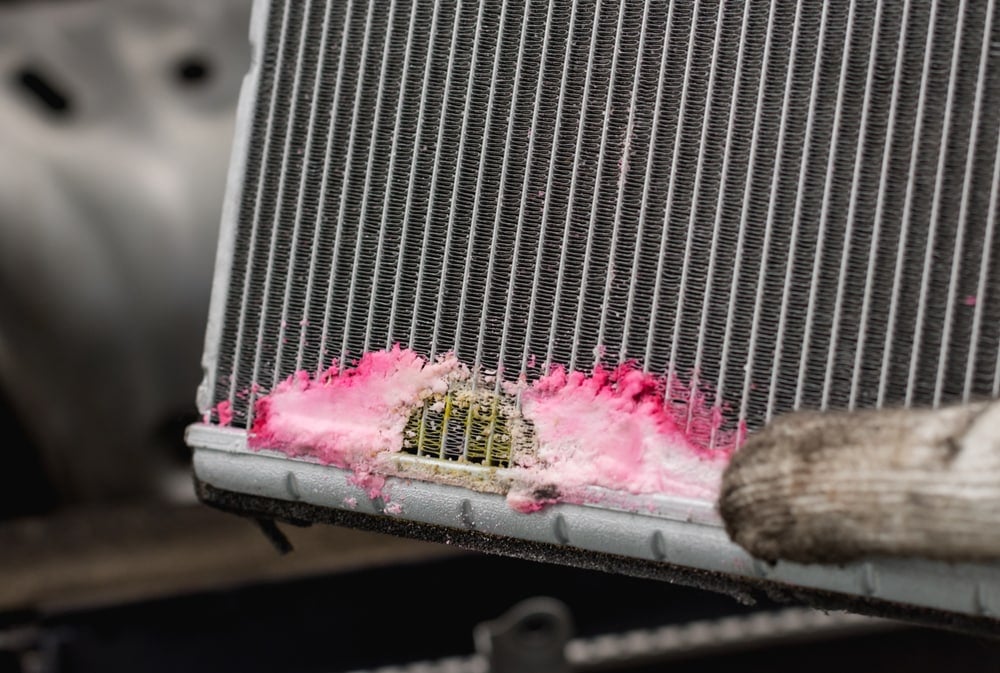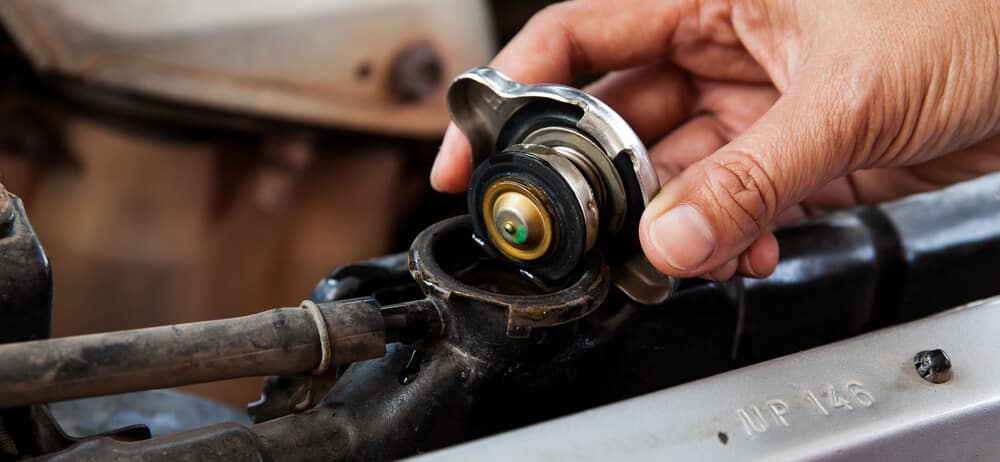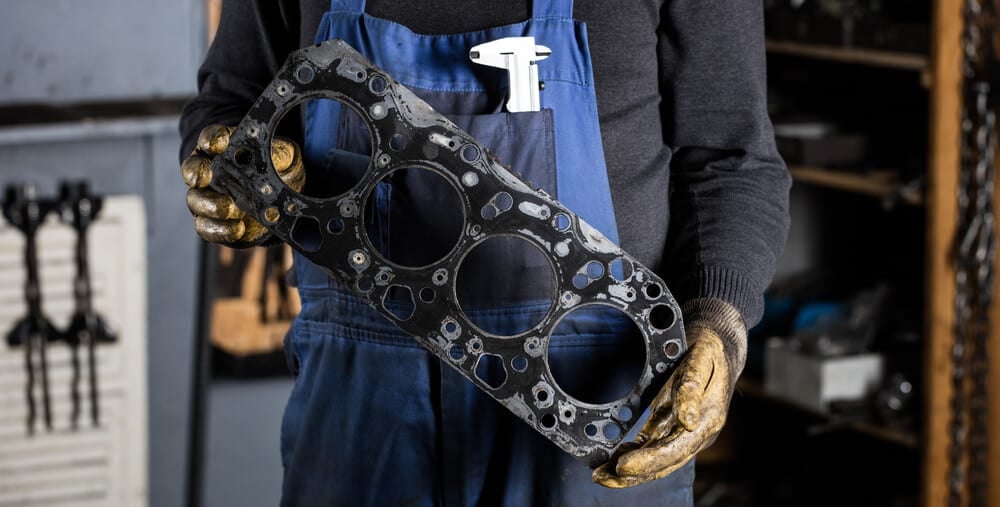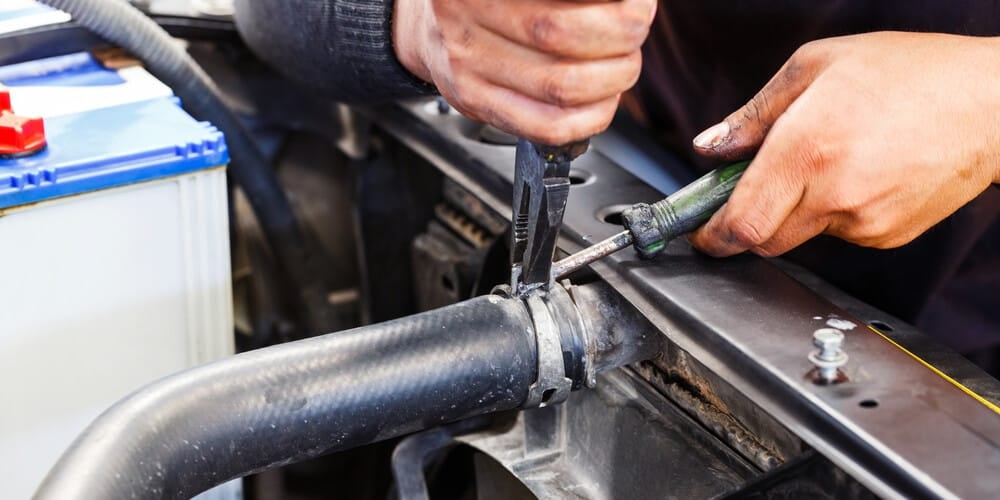Is a Coolant Leak on a Car Easy tofix
There's nothing more alarming than heading out to your car in the morning and finding green liquid pooling underneath.
The worst-case scenario starts going through your mind and you are already planning out how to purchase a new car. However, there are lots of things that can cause this problem. In fact, there might be a simple fix for that coolant or antifreeze leak.
In this article, we discuss the most common causes of a coolant leak. Our guide also reviews some of the best ways to fix a coolant/antifreeze leak as well as the coolant leak repair cost, so you can get back on the road as soon as possible.
5 Causes of Coolant/Antifreeze Leaks
The most common cause of a coolant leak is a leaking radiator hose or a leaking radiator. It can also be caused by a failed water pump or a defective expansion tank. It's also very common to find leaks around hose clamps and from cracks in plastic tubes in the cooling system.
Here's a more detailed list of the possible causes of coolant leaks:
1. Hole in Radiator

The radiator is subject to a lot of abuse, sitting at the front of the vehicle the way it does. Corrosion is one of the main reasons that a radiator fails, leaving a hole behind that can allow coolant to escape.
Additionally, the sealing gasket located between the radiator and tank can wear out, causing a leak. There could also be a leak coming from one of the hoses connected to the radiator. Over time, these hoses become brittle and simply fail.
2. Leaky Radiator Cap

One might not consider the impact this small cap has on the cooling system. The radiator contains a lot of pressure, with the cap responsible for holding it all in.
When it's working correctly, the cap creates a solid, reliable seal that ensures the system runs with optimal pressure. Over time, the seal to this cap starts to deteriorate, allowing coolant to seep out.
Related: 6 Symptoms of a Bad Radiator Cap, Location & Replacement Cost
3. Blown Head Gasket

The car's head gasket is responsible for keeping the engine oil and coolant separate. When the gasket first fails, you may not even know what's happening because the leakage can be internal.
However, you might start to notice coolant in the engine oil or vice versa. You will also see the engine temperatures start to rise. Eventually, the coolant will begin leaking outside of the engine, indicating a serious issue.
Related: 5 Symptoms of a Blown Head Gasket, Location
4. Failed Water Pump
The water pump is responsible for circulating the coolant through the system. Usually, the water pump is driven by a belt. This belt connects to the engine crankshaft, but this part is subject to corrosion and leaks.
The water pump itself can also suffer from external damage that leads to a leak. Either way, if the pump isn't working right, the coolant can't move properly, which will cause the engine to overheat.
Related: 6 Symptoms of a Bad Water Pump
5. Defective Expansion Tank
Next to the car engine, you will see a plastic container that holds coolant. It gets connected to the radiator with a hose. Its primary job is to feed coolant to the radiator as needed.
However, time causes the plastic to become weak. It can easily crack and start leaking. The hose running to it can also deteriorate and leak.
How to fix a Coolant Leak
Because many different issues can cause an antifreeze leak, there are also many things you can do to repair the leak. We do always recommend replacing the leaking part, but here are some other methods you can use:
1. Use Sealer
What do you do if you are in the middle of nowhere and your radiator is leaking? If you have some eggs in the trunk, you might be able to buy yourself some time. However, this fix isn't recommended unless you have no other options.
Allow the car to cool down and unscrew the radiator cap. Crack a couple of eggs and put them in the radiator reservoir. If the leak doesn't stop, you can try a few more eggs.
As the eggs cook, the fluid pressure will try to push them out through the holes. If all goes well, the egg will get clogged in the holes and stop the leak temporarily. However, the eggs can also lead to further damage, which is why some mechanics won't recommend it.
There are also special additives for fixing coolant leaks instead of eggs. There are reports of cooling systems getting clogged by using them, so be very careful. However, if you have an ancient car that is not worth repairing, it can be worth trying. You can find it here:
2. Replace Clamps

All of the hoses are held on with clamps. If one fails because of rust or corrosion, you will need to replace it.
Allow the car to cool down. Locate the defective clamp. If it is in some positions, you might need to drain the coolant into a bucket. Take off the affected hose and remove the old clamp. Put the new clamp on and tighten it down.
Fill up the radiator with fresh coolant and tighten down the cap. Run the car until it reaches normal operating temperature. Inspect the repair to ensure no more coolant is leaking.
3. Replace Hoses
If there is an issue with the hose itself, you will follow many of the same procedures as when you replaced a clamp. In fact, you might consider swapping out the clamp while you have the hose off.
Allow the car to cool down and locate the bad hose. You may need to drain the coolant into a bucket, depending on where the hose is.
Take off the clamps holding the hose in place. Replace the hose with a new part and clamp it back down. Fill the system with fresh fluid and run the car to check for leaks.
4. Swap out Radiator
Every radiator is installed differently, depending on the style the manufacturer uses. However, you will have some similar steps with every radiator replacement.
Allow the car to cool and disconnect the automotive battery. Drain all of the coolant from the system by pulling the plug out of the bottom of the radiator. Make sure you dispose of this coolant properly.
Remove any hoses that connect the radiator to the engine and take off the thermostat. If there is a fan mounted to the radiator, you need to remove that too. Take off any bolts holding the radiator to its mounting bracket.
Take out the old radiator and replace it with a new one. Put the system back together in reverse, replacing any other worn-out parts in the process. Fill up the radiator and start the engine to check for leaks.
Coolant Leak Repair Cost
The cost to repair a coolant leak is between $10 and $3000. A new clamp or hose might not cost you much, but an entire radiator replacement might cost between $300 and $1,200 for parts and labor, while head gasket repair can easily cost $2,000 or more.
The easiest way to save money is to get your coolant leak repaired at the first sign of trouble before it turns into something more significant.
Coolant Leak FAQs
Can you drive a car with a coolant leak?
No, it is never recommended to drive a car with even a minor coolant leak. If your car is leaking coolant, you don't know when the coolant level will get low. This can result in an overheating engine which can lead to very expensive repair costs.
How long can you go with a coolant leak?
Driving with a coolant leak is not recommended at all. Even a small coolant leak puts you at risk of overheating the engine, which can destroy your engine. Small coolant leaks can also cause air to enter the cooling system.
Can a coolant leak fix itself?
No, although small coolant leaks can be "fixed" temporarily, it is not a permanent solution. Coolant leaks must be fixed by either replacing the part or using a coolant sealing additive.
Why is my car losing coolant but not overheating?
If your car is losing coolant slowly but not overheating, it means that the coolant level is not low enough to cause the car to overheat. But for every second you drive with low coolant, you risk air bubbles in the cooling system causing your engine to overheat.
Was this article helpful?
Yes No
Source: https://mechanicbase.com/coolant/coolant-leak/
0 Response to "Is a Coolant Leak on a Car Easy tofix"
Post a Comment